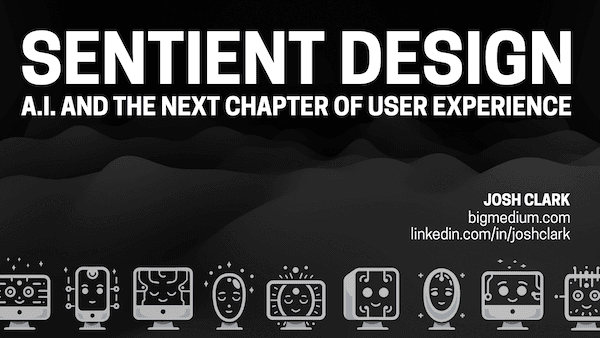Build Design Systems With Penpot Components
Penpot's new component system for building scalable design systems, emphasizing designer-developer collaboration.


In May 2024, Josh Clark presented a talk titled "Sentient Design: AI and the Next Chapter of User Experience" at Friends of Figma Miami. This post by Josh Clark on bigmedium delves into how designers can work with intelligent interfaces that adapt to their users:
"Sentient Design" refers to the design of intelligent interfaces that are aware of context and intent. With a focus on understanding the significance of AI and how it can be used most effectively, the talk aims to guide companies to leverage AI for meaningful innovation in their products and services.
Sentient Design involves creating intelligent interfaces that adapt to user needs and context in real-time.
AI and machine learning offer various capabilities like recommendation, prediction, and generation that can be leveraged as design materials.
LLMs (Large Language Models) are powerful at interpreting and transforming language, making them suitable for mediating radically adaptive experiences.
Designers should approach AI-mediated experiences with productive humility, acknowledging ambiguity and uncertainty.
Defensive design principles are crucial for managing expectations, gating presentation, and recovering gracefully from errors in AI-powered systems.
Designers play a vital role in identifying meaningful problems that AI can solve and avoiding potential pitfalls.
AI-driven updates, curated by humans and hand-edited for the Prototypr community